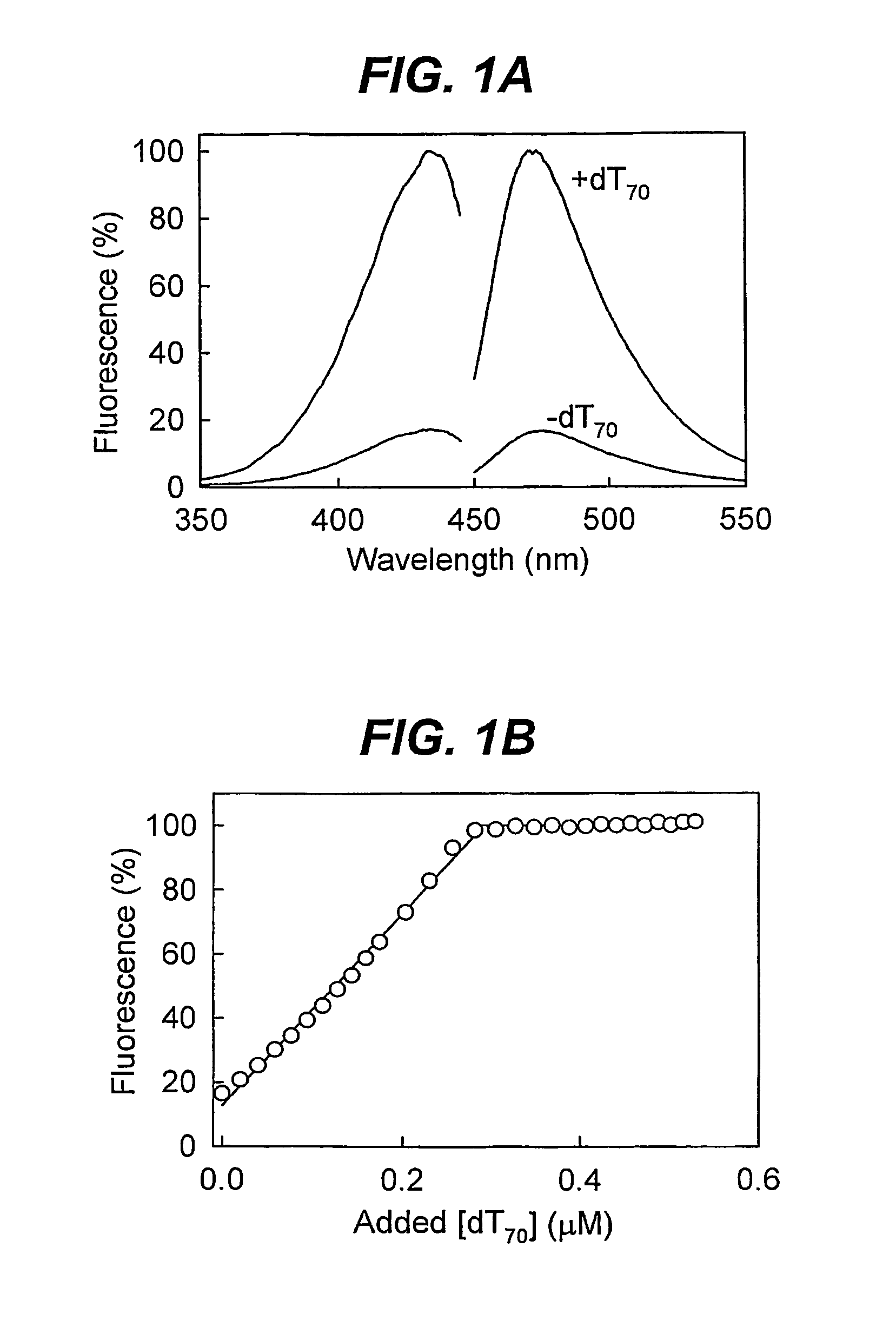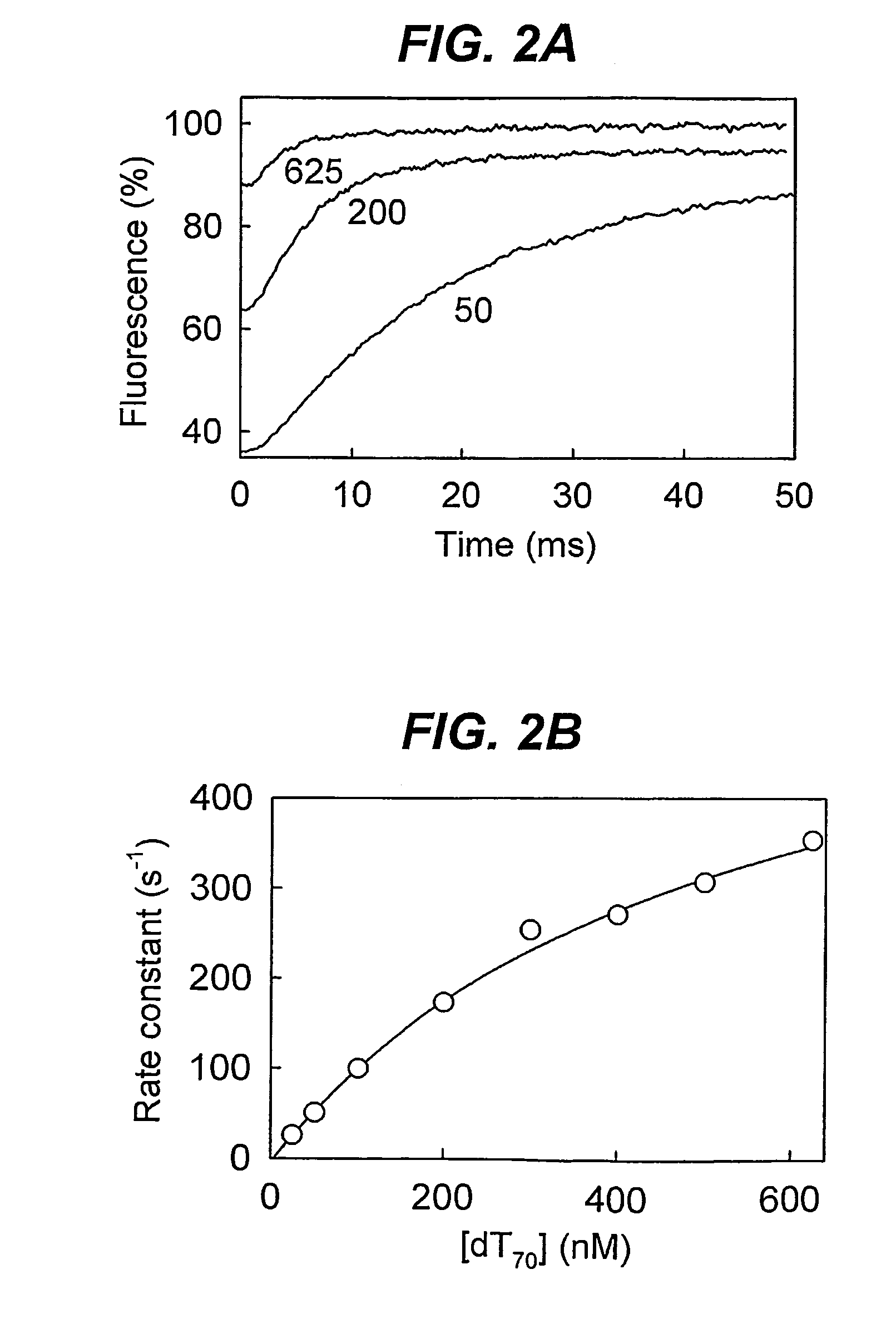Biosensor for detection and visualisation of single-stranded DNA
a biosensor and dna technology, applied in the field of single stranded dna detection and visualisation, can solve the problems of limitations of assays relying on intrinsic tryptophan fluorescence changes, and achieve the effect of rapid reaction time of methods
- Summary
- Abstract
- Description
- Claims
- Application Information
AI Technical Summary
Benefits of technology
Problems solved by technology
Method used
Image
Examples
Embodiment Construction
Preparation of mutant E. coli SSB proteins
[0075]The wild type E. coli ssb gene was cloned into a pET15b vector using PCR with primers containing flanking NdeI and BamHI restrictions sites. This vector was used as a template for site directed mutagenesis to produce genes for G26C, S92C or W88C E. coli SSB. The pET15b constructs were sequenced to confirm the presence of the desired mutations and the integrity of the remainder of the ssb gene. The mutated genes were then transferred to pET22b vectors using the NdeI and BamHI restriction sites and these were used to transform BL21 pLysS for overexpression using the T7 promoter system. Cells were grown in 21 of LB at 37° C. to mid-log phase and expression was induced with 1 mM IPTG. After three hours, the cells were harvested, resuspended in 50 ml of 50 mM Tris.HCl pH 7.5, 200 mM NaCl, 1 mM EDTA, 1 mM dithiothreitol and 10% sucrose, and stored at −80° C.
[0076]The mutant E. coli SSB proteins were purified at 4° C. using a modification of ...
PUM
| Property | Measurement | Unit |
|---|---|---|
| excitation wavelengths | aaaaa | aaaaa |
| excitation wavelengths | aaaaa | aaaaa |
| pH | aaaaa | aaaaa |
Abstract
Description
Claims
Application Information
 Login to View More
Login to View More - R&D
- Intellectual Property
- Life Sciences
- Materials
- Tech Scout
- Unparalleled Data Quality
- Higher Quality Content
- 60% Fewer Hallucinations
Browse by: Latest US Patents, China's latest patents, Technical Efficacy Thesaurus, Application Domain, Technology Topic, Popular Technical Reports.
© 2025 PatSnap. All rights reserved.Legal|Privacy policy|Modern Slavery Act Transparency Statement|Sitemap|About US| Contact US: help@patsnap.com



